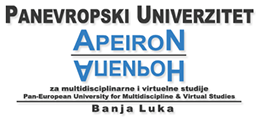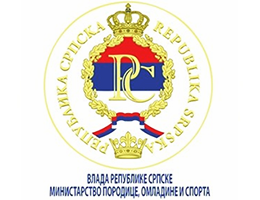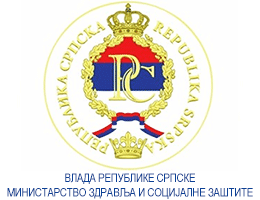Cardiorespiratory Fitness Indicators in Young Athletes: Analysis for Personalized Training Programs
Volume 15, Issue 1 (2025)
Volume 15, Issue 1 (2025)
Cardiorespiratory Fitness Indicators in Young Athletes: Analysis for Personalized Training Programs
Abstract:
This study investigates the cardiorespiratory indicators of junior athletes (16–18 years old) with a focus on
aerobic (AT) and anaerobic (AnT) thresholds, maximal oxygen uptake (VO₂max), power output, and their relationship with
anthropometric parameters. Testing was conducted on 26 triathletes who are candidates for Master of Sport (13 males and
13 females) using a Wattbike ergometer, a Cosmed gas analyzer, and a Polar heart rate monitor. Significant individual and
gender differences in functional capabilities were observed. The mean VO₂max values were 68.7±7.2 ml/min/kg for males
and 55.1±8.4 ml/min/kg for females (p <0.001), indicating differences in oxygen potential and aerobic power between the
groups. The anaerobic threshold was reached at 84.3±6.1% of VO₂max on average, demonstrating high lactate tolerance
and efficient use of aerobic and anaerobic energy systems. The power-to-weight ratio (W/kg) was higher in athletes with
lower BMI, with values such as 6.0 W/kg at a BMI of 20.8 and 4.9 W/kg at a BMI of 15.9.
The results highlight the necessity of personalized training programs based on threshold values and anthropometric characteristics.
Athletes with low AT/MAX% (<70%) should focus on aerobic endurance development, while those with critically
low BMI (<18.5) require adjustments in nutrition and workload to prevent metabolic disorders. This study also proposes
a methodology for integrating objective testing data into training programs to optimize young triathletes’ preparation. The
findings have practical implications for coaches and sports physiologists working in endurance sports.
Keywords:
cardiorespiratory testing, aerobic threshold, anaerobic threshold, VO₂max, personalized training
Full Text:
References:
Allman, B. R., Spray, B. J., Lan, R. S., Andres, A., & Børsheim, E. (2022). Circulating long-chain acylcarnitine concentrations are not affected
by exercise training in pregnant women with obesity. Journal of applied physiology (Bethesda, Md. : 1985), 132(2), 470–476. https://
doi.org/10.1152/japplphysiol.00712.2021
Armstrong, N., & McManus, A. M. (2011). Physiology of elite young male athletes. Medicine and sport science, 56, 1–22. https://doi.
org/10.1159/000320618
Baker, J. S., & Francis, M. (2004). Exercise, nutrition, and immune function. Journal of Sports Sciences, 22(1), 115-125. https://doi.
org/10.1080/0264041031000140590
Bassett, D. R., Jr, & Howley, E. T. (2000). Limiting factors for maximum oxygen uptake and determinants of endurance performance. Medicine
and science in sports and exercise, 32(1), 70–84. https://doi.org/10.1097/00005768-200001000-00012
Biddle, S. J., & Asare, M. (2011). Physical activity and mental health in children and adolescents: a review of reviews. British journal of sports
medicine, 45(11), 886–895. https://doi.org/10.1136/bjsports-2011-090185
Buchheit, M., & Laursen, P. B. (2013). High-intensity interval training, solutions to the programming puzzle: Part I: cardiopulmonary emphasis.
Sports medicine (Auckland, N.Z.), 43(5), 313–338. https://doi.org/10.1007/s40279-013-0029-x
Burke, R., Piñero, A., Coleman, M., Mohan, A., Sapuppo, M., Augustin, F., Aragon, A. A., Candow, D. G., Forbes, S. C., Swinton, P., &
Schoenfeld, B. J. (2023). The Effects of Creatine Supplementation Combined with Resistance Training on Regional Measures of
Muscle Hypertrophy: A Systematic Review with Meta-Analysis. Nutrients, 15(9), 2116. https://doi.org/10.3390/nu15092116
Foster, C., Casado, A., Esteve-Lanao, J., Haugen, T., & Seiler, S. (2022). Polarized Training Is Optimal for Endurance Athletes. Medicine and
science in sports and exercise, 54(6), 1028–1031. https://doi.org/10.1249/MSS.0000000000002871
Haugen, T., Sandbakk, Ø., Seiler, S., & Tønnessen, E. (2022). The Training Characteristics of World-Class Distance Runners: An Integration
of Scientific Literature and Results-Proven Practice. Sports medicine - open, 8(1), 46. https://doi.org/10.1186/s40798-022-00438-7
Hawley, J. A., & Leckey, J. J. (2015). Carbohydrate Dependence During Prolonged, Intense Endurance Exercise. Sports medicine (Auckland,
N.Z.), 45 Suppl 1(Suppl 1), S5–S12. https://doi.org/10.1007/s40279-015-0400-1
Heiestad, H., Myklebust, G., Funnemark, K., & Holm Moseid, C. (2022). Closing the gap on injury prevention: the Oslo Sports Trauma Research
Centre four-platform model for translating research into practice. British journal of sports medicine, 56(9), 482–483. https://doi.
org/10.1136/bjsports-2021-104998
Joyner, M. J., & Coyle, E. F. (2008). Endurance exercise performance: the physiology of champions. The Journal of physiology, 586(1), 35–44.
Lucia, S., Bianco, V., & Di Russo, F. (2023). Specific effect of a cognitive-motor dual-task training on sport performance and brain processing associated with decision-making in semi-elite basketball players. Psychology of sport and exercise, 64, 102302. https://doi.
org/10.1016/j.psychsport.2022.102302
Meyer, J., & Timmons, B. W. (2021). Jumping at the opportunity: Promoting physical activity after COVID-19. Scandinavian Journal of Medicine
& Science in Sports, 31(6), 1173–1181. https://doi.org/10.1111/sms.13744
Morrison, S., & Newell, K. M. (2023). Strength training as a dynamical model of motor learning. Journal of sports sciences, 41(5), 408–423.
Mountjoy, M., Ackerman, K. E., Bailey, D. M., Burke, L. M., Constantini, N., Hackney, A. C., Heikura, I. A., Melin, A., Pensgaard, A. M.,
Stellingwerff, T., Sundgot-Borgen, J. K., Torstveit, M. K., Jacobsen, A. U., Verhagen, E., Budgett, R., Engebretsen, L., & Erdener, U.
(2023). 2023 International Olympic Committee’s (IOC) consensus statement on Relative Energy Deficiency in Sport (REDs). British
journal of sports medicine, 57(17), 1073–1097. https://doi.org/10.1136/bjsports-2023-106994
Mountjoy, M., Sundgot-Borgen, J., Burke, L., Carter, S., Constantini, N., Lebrun, C., Meyer, N., Sherman, R., Steffen, K., Budgett, R., &
Ljungqvist, A. (2014). The IOC consensus statement: beyond the Female Athlete Triad--Relative Energy Deficiency in Sport (RED-S).
British journal of sports medicine, 48(7), 491–497. https://doi.org/10.1136/bjsports-2014-093502
Saw, J., Starovoytov, A., Aymong, E., Inohara, T., Alfadhel, M., McAlister, C., Samuel, R., Grewal, T., Parolis, J. A., Sheth, T., So, D., Minhas,
K., Brass, N., Lavoie, A., Bishop, H., Lavi, S., Pearce, C., Renner, S., Madan, M., Welsh, R. C., … Mancini, G. J. (2022). Canadian
Spontaneous Coronary Artery Dissection Cohort Study: 3-Year Outcomes. Journal of the American College of Cardiology, 80(17),
1585–1597. https://doi.org/10.1016/j.jacc.2022.08.759
Schaal, K., VanLoan, M. D., Hausswirth, C., & Casazza, G. A. (2021). Decreased energy availability during training overload is associated
with non-functional overreaching and suppressed ovarian function in female runners. Applied physiology, nutrition, and metabolism =
Physiologie appliquee, nutrition et metabolisme, 46(10), 1179–1188. https://doi.org/10.1139/apnm-2020-0880\
Singh, B., Olds, T., Curtis, R., Dumuid, D., Virgara, R., Watson, A., Szeto, K., O’Connor, E., Ferguson, T., Eglitis, E., Miatke, A., Simpson, C.
E., & Maher, C. (2023). Effectiveness of physical activity interventions for improving depression, anxiety and distress: an overview of
systematic reviews. British journal of sports medicine, 57(18), 1203–1209. https://doi.org/10.1136/bjsports-2022-106195
Spragg, J., Leo, P., & Swart, J. (2023). The Relationship between Physiological Characteristics and Durability in Male Professional Cyclists.
Medicine and science in sports and exercise, 55(1), 133–140. https://doi.org/10.1249/MSS.0000000000003024
Stellingwerff, T., Mountjoy, M., McCluskey, W. T., Ackerman, K. E., Verhagen, E., & Heikura, I. A. (2023). Review of the scientific rationale,
development and validation of the International Olympic Committee Relative Energy Deficiency in Sport Clinical Assessment Tool:
V.2 (IOC REDs CAT2)-by a subgroup of the IOC consensus on REDs. British journal of sports medicine, 57(17), 1109–1118. https://
doi.org/10.1136/bjsports-2023-106914
Stöggl, T. L., & Sperlich, B. (2015). The training intensity distribution among well-trained and elite endurance athletes. Frontiers in physiology,
Taylor, S., & Francis, M. (2023). Reliability of anaerobic and aerobic mobility performance tests used in wheelchair rugby, wheelchair basketball,
and wheelchair tennis: A systematic review. Journal of Sports Sciences, 41(5), 1-25. https://doi.org/10.1080/02640414.2023.
2259726
Vitorino, C., & Pinho, M. G. (2021). The redox properties of sulfur-containing amino acids: Implications for biological systems. Redox Biology,
41, 101976. https://doi.org/10.1016/j.redox.2021.101976
Wernhart, S., Hedderich, J., Wunderlich, S., Schauerte, K., Weihe, E., Dellweg, D., & Siemon, K. (2021). The Feasibility of High-Intensity Interval
Training in Patients with Intensive Care Unit-Acquired Weakness Syndrome Following Long-Term Invasive Ventilation. Sports
medicine - open, 7(1), 11. https://doi.org/10.1186/s40798-021-00299-6
Zhou, Y. S., Meng, F. C., Cui, Y., Xiong, Y. L., Li, X. Y., Meng, F. B., Niu, Z. X., Zheng, J. X., Quan, Y. Q., Wu, S. X., Han, Y., & Xu, H. (2022).
Regular Aerobic Exercise Attenuates Pain and Anxiety in Mice by Restoring Serotonin-Modulated Synaptic Plasticity in the Anterior
Cingulate Cortex. Medicine and science in sports and exercise, 54(4), 566–581. https://doi.org/10.1249/MSS.0000000000002841






